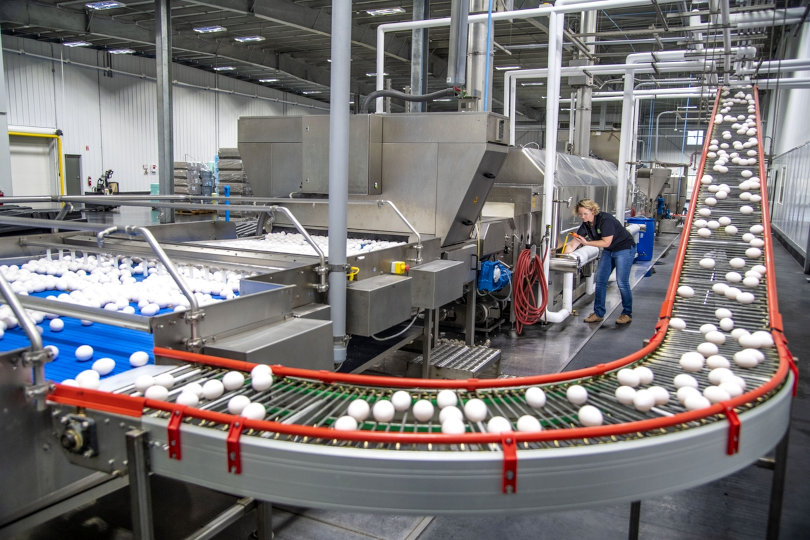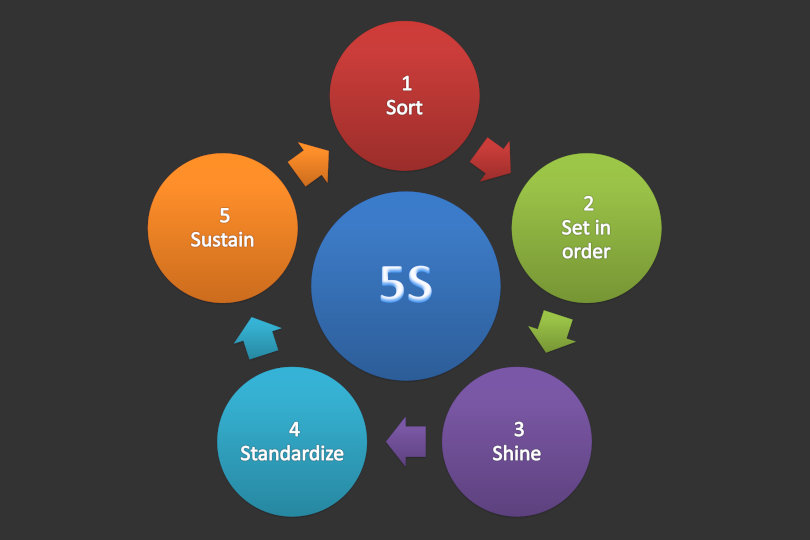Lean manufacturing deals with waste in a business or an enterprise. In this context, ‘waste’ refers to wasted resources, energies, potentials, etc. Not making the optimum use of all available resources leads to inefficient production. The undervalued resources could mean anything from managing projects, using proper manufacturing tools, and the skill level of the workforce.
The manufacturing industry is undoubtedly very wasteful in its operations. Whether it’s idle labor or useless materials that can’t be recycled or reused, the outcome is the same: output is hampered. The concept of lean as a management strategy arose from this stress on waste elimination and consequently improving production.

Lean manufacturing principles or lean production principles are a set of concepts and ideas that can have universal application in order to improve productivity. Lean manufacturing approaches can help you improve the efficiency of your organizational processes and, as a corollary, make you more successful and relevant in any sector.
Lean Manufacturing doesn’t Equate to Reducing Workforce Size
The primary objective of a lean manufacturing system is to minimize waste generation. There are several ways through which waste becomes a pertinent issue and one that needs to be urgently dealt with. Some of the reasons behind wasteful practices include overproduction, incompetent methods, inefficient tools, etc.
What often gets lost behind the discussions on tools and techniques is the question of wasted human potential. The human workforce is no doubt the best and most efficient component of any manufacturing unit workforce. Not paying attention to the wastage of human potential can be very detrimental to the growth of any company.
Some jobs are simply more efficient with automation. Employing manual labor there is a loss of both output and human potential. Engaging the workforce in work that adds value and meaning to both the company and to themselves is important to not let your human resources get wasted.
Better Relationship with Customers and Clients
Lean focuses on the needs of loyal consumers and offers solutions for reducing inefficient procedures. Instead of concentrating on the demands of all clients, businesses can concentrate on their most regular customers, resulting in strong and dependable relationships.
Your communication channels will improve significantly, and your ties with your most loyal clients will provide a consistent stream of income. Here also you need to keep in mind that this does not mean turning down customers. That will be a disaster for any business. It simply means concentrating on that chunk of the customer base which is the most regular, loyal, and guarantees a steady relationship.
Consistent Transformation and Improvement
It is very important to understand that lean principles do not take a manufacturing unit to a particular destination. They are a set of principles and ideas that are meant to guide a company through its journey to make waste elimination possible.
It is wrong to assume that once you implement these principles, you will automatically arrive at paint where waste generation is no longer an issue with your unit. What must be understood is that these principles can only guide a company in its journey, not take it directly to its goals.
The 5S of Lean

1. Sort
The first S, Sort, seeks to eliminate elements from the work environment that aren’t required for present manufacturing processes. It is the initial stage in implementing lean principles.
2. Set in Order
Set In Order concentrates on developing efficient and reliable storage solutions that make objects easy to locate, identify, and store. Only after the previous pillar, Sort, has purged the work area from unnecessary things can Set in Order be deployed.
3. Shine
The following step is to properly clean the worksite after the clutter that was already blocking the workspaces has been removed and the remaining objects have been arranged. To keep this progress going, regular follow-up maintenance is essential. Workers can detect equipment defects such as leakage, shocks, equipment failures, and errors in a clean workspace.
4. Standardize
5S is distinguishable from the ordinary cleaning job by its standardization. Whatever has just happened is now systematized, and one-time initiatives have become routines. To make these processes habitual, standardize regular tasks, make schedules, and display instructions. It establishes 5S standard operating procedures to ensure order.
5. Sustain
Sustain not only refers to the act of keeping 5S functioning well, but it also relates to ensuring that everybody in the organization has involvement. Employees and managers both need to contribute. It all comes down to long-term success.
The five S of lean principles in this order can help any business or company minimize waste and increase productivity. Thousands of enterprises worldwide have benefited greatly from adopting lean manufacturing principles.







